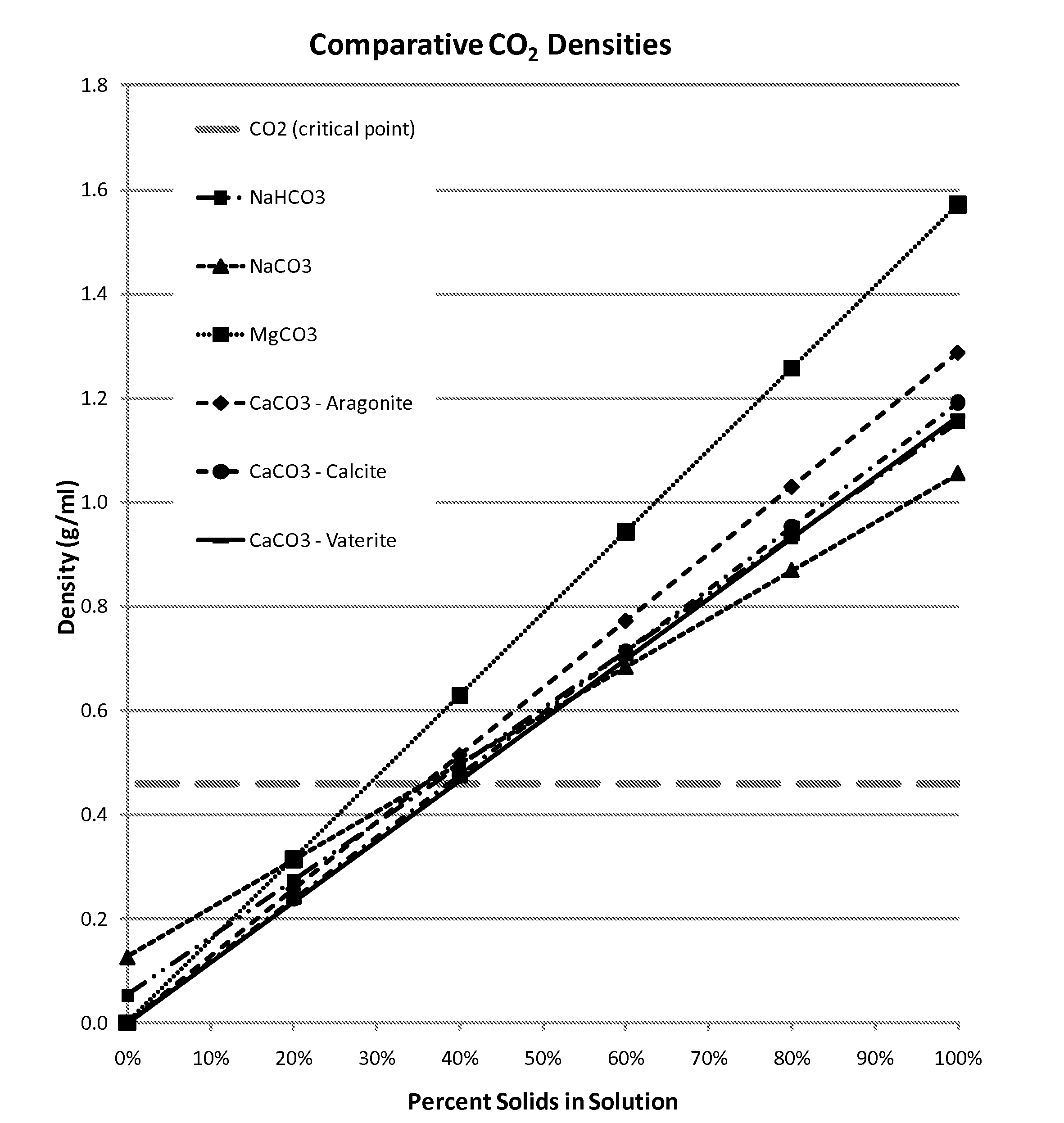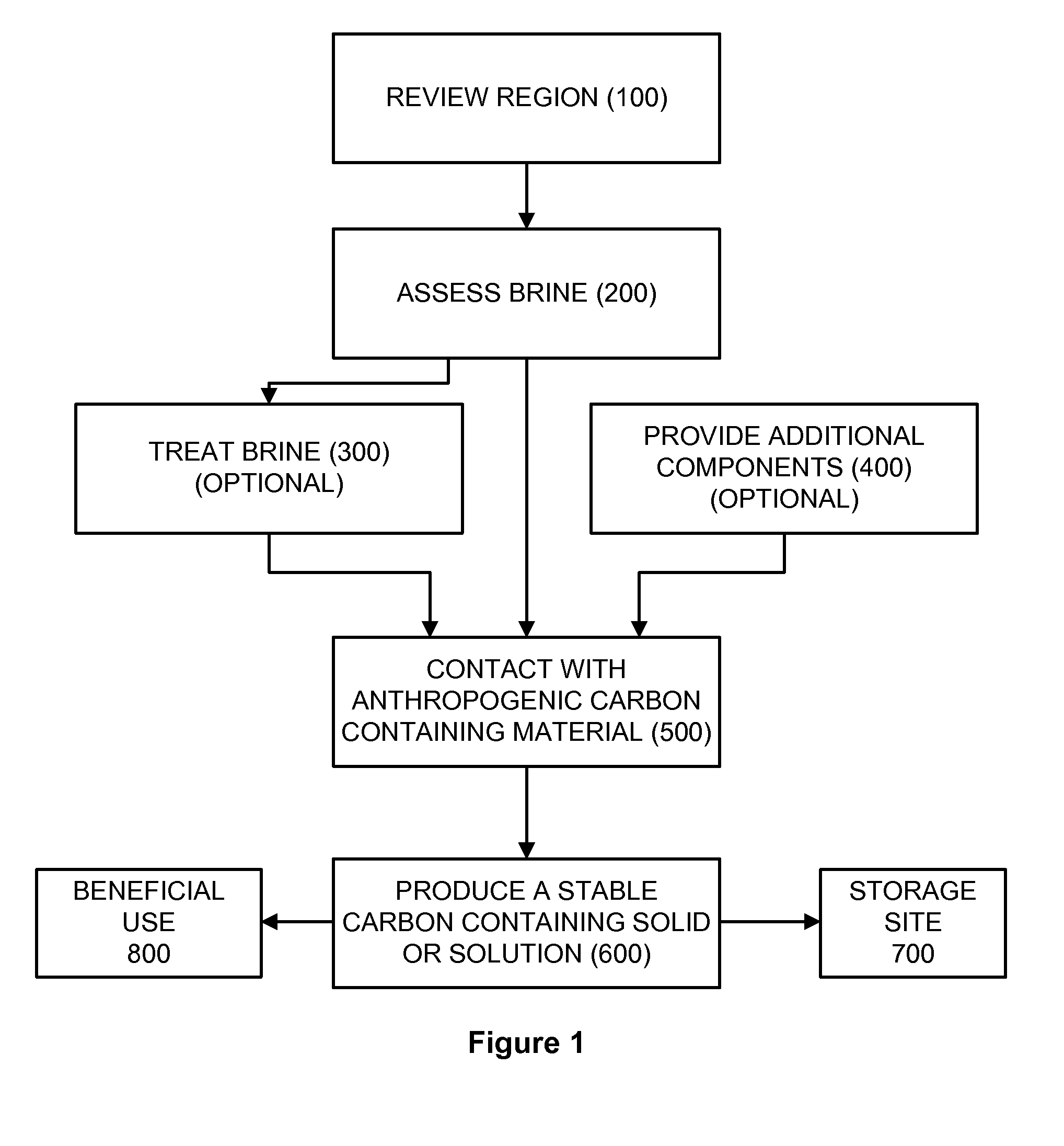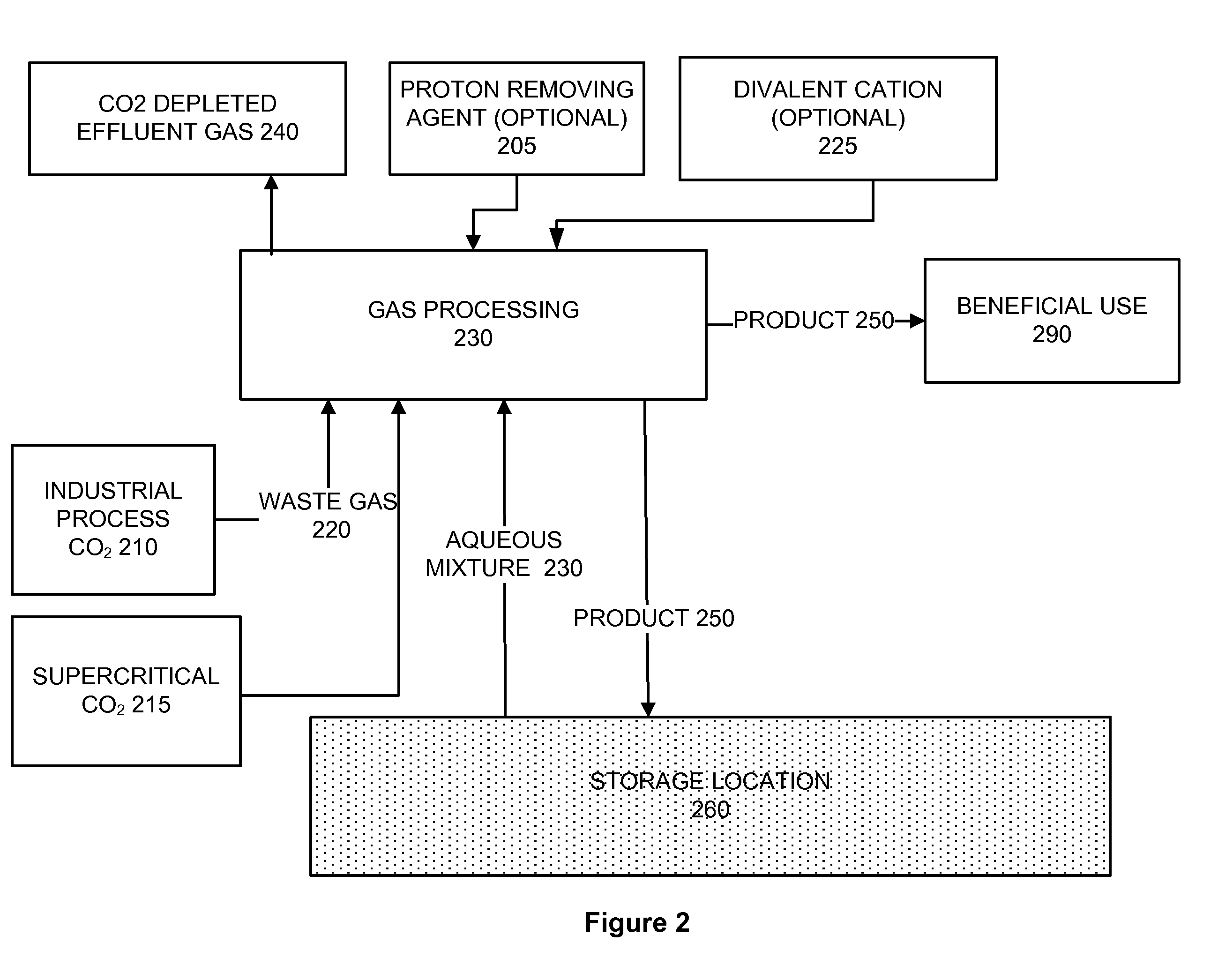Carbonate products for carbon capture and storage
- Summary
- Abstract
- Description
- Claims
- Application Information
AI Technical Summary
Benefits of technology
Problems solved by technology
Method used
Image
Examples
Example
Example 1
[0290]This example demonstrates a step in a site development process for the utilizing a region in Southwest Wyoming for sequestering carbon dioxide. The method includes steps to assess the availability of water, calcium, alkalinity, and CO2 in the region using publicly available data. The first step in site selection process is to identify anthropogenic sources of CO2 (potential sites suitable for the Calera process). Once these locations have been established sources of water, calcium, and alkalinity within 100 miles of the CO2 source are screened based on predefined requirements. The results of this screening is a comprehensive data set in two formats (Excel and spatially referenced database file) that may then be spatially analyzed using the ARCGIS™ software system. Data analyses are conducted based on proximity to transportation networks (roads, pipelines, railroads), proximity to urban centers (potential markets), and proximity to other cement and concrete operators. ...
PUM
| Property | Measurement | Unit |
|---|---|---|
| Fraction | aaaaa | aaaaa |
| Fraction | aaaaa | aaaaa |
| Fraction | aaaaa | aaaaa |
Abstract
Description
Claims
Application Information
 Login to View More
Login to View More - R&D
- Intellectual Property
- Life Sciences
- Materials
- Tech Scout
- Unparalleled Data Quality
- Higher Quality Content
- 60% Fewer Hallucinations
Browse by: Latest US Patents, China's latest patents, Technical Efficacy Thesaurus, Application Domain, Technology Topic, Popular Technical Reports.
© 2025 PatSnap. All rights reserved.Legal|Privacy policy|Modern Slavery Act Transparency Statement|Sitemap|About US| Contact US: help@patsnap.com



